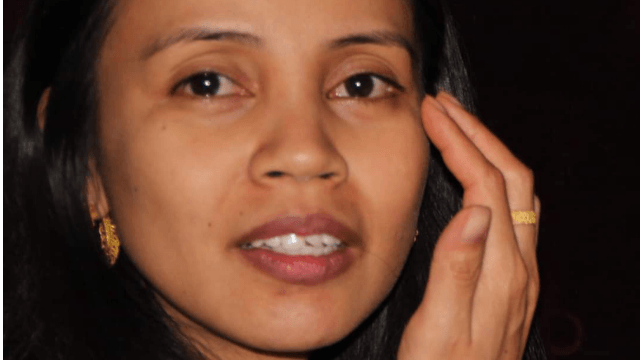Ihoby Lysiane Rabarijohn (EXEC PROG 17): “African Art Is Getting More International Recognition”
An art consultant, Ihoby Lysiane Rabarijohn (EXEC PROG 17) works to promote modern art produced in Madagascar and by the country’s diaspora. We met with her while she was in France to organise the La Voix, le Loin exhibition.
ESSEC Alumni: Out of all the art projects you’ve worked on, which stand out most for you?
Ihoby Lysiane Rabarijohn: I was part of the team that organised the first ever Madagascar pavilion at La Biennale di Venezia in 2019. I also coordinated the exhibition for Madagascar’s best-known photographer: Pierrot Men, at the PhotoSaintGermain festival in 2019. And I also coordinated the Exceptions d’Afrique exhibition in Madagascar, as part of Africa Season 2020 on show at Artcurial, in Paris, in June 2021.
EA: Today, you’re bringing us the La Voix, le Loin exhibition with the multi-disciplinary artist and poet, Jean Luc Raharimanana…
I. L. Rabarijohn: It’s a travelling exhibition that will go around the world, taking on different forms in different venues: residencies, installations, and even stage performances. The journey begins in France, where we will be at the Bibracte Museum until November 2021, with a series of art installations in Mont Beuvray Forest: poems can be read on unusual media, with the voice becoming an echo of music, music of images, and images of sculptures, sculptures that symbolise the journey into the world of Madagascan spirits and ancestors, while also evoking stories unique to the Bibracte, like the myth of the white lady and Pierre de la Wivre.
EA: What is unique about Madagascan art?
I. L. Rabarijohn: Madagascan art is made up of ancient, or “traditional” art (weaving, basketwork, engraved reliefs, sculptures, etc.), and original forms using imported techniques. Between the end of the 19th and beginning of the 20th centuries, for example, Madagascan painters harnessed the possibilities of Western techniques to express local tastes, with a focus on themes belonging to their own society: typical activities, characters, and landscapes, like the highland paddy fields. Later, the end of colonialism brought with it a need to express our own unique culture, to affirm our sense of belonging and to depict the Madagascan world through the use or traditional symbolism and the rich local oral storytelling tradition. Bringing us to today, the increased contact with the outside world made possible by new technologies is encouraging modern artists to experiment with plastic arts, using new mediums and materials. This young movement with strong activist values is trying to move away from more academic forms of art, while simultaneously drawing on Madagascar’s rich cultural heritage.
EA: Where does Madagascan art fit into the international scene?
I. L. Rabarijohn: Madagascan art is becoming more prominent following its inclusion in a growing number of prestigious exhibitions and the greater recognition that is being given to African art more generally, with dedicated exhibitions on show all over the world, and the increase in biennials and fairs like 1.54 Contemporary African Art Fair and AKAA. In parallel, a market is gradually taking shape, with support from certain international galleries and collectors.
EA: We often talk about “African art”. Is it a meaningful concept? Does the work of artists across the African continent share common characteristics?
I. L. Rabarijohn: Africa contains 54 countries, each with their own unique culture. However, you can see that artistic techniques incorporating visual abstraction, geometric designs, salvage, recycling, and the transformation of materials have deep roots across the continent.
EA: Can some of these characteristics be seen in Madagascan art?
I. L. Rabarijohn: Some of them, like the use of geometric patterns and the transformation of materials in local artwork. However, Madagascan art has felt other influences, from Asia in particular, which are what makes it so original and distinctive compared to anything else from the African continent.
Interview by Louis Armengaud Wurmser (E10), ESSEC Alumni Content Manager
Did you enjoy this article? Join ESSEC Alumni so that we can keep bringing you quality content on ESSEC and its latest news!

Comments0
Please log in to see or add a comment
Suggested Articles




